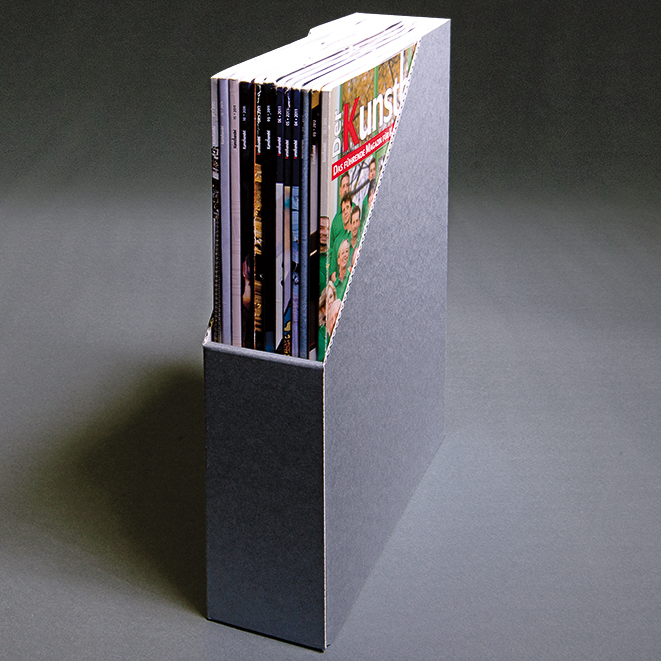How to safely store old and valuable documents, photographs and drawings?
While archives and museums benefit from professional storage conditions, this question also arises in private households, where technical aids like air conditioning are often unavailable. The good news: With a few simple measures, you can do a lot at home to ensure long-term preservation.
Why paper reacts so sensitively to its environment
Paper and cardboard are hygroscopic materials – they absorb or release moisture from the air depending on the surrounding environmental conditions. This constant exchange can affect the material: it may warp, shrink, or expand – especially when exposed to significant fluctuations in temperature and humidity. Over time, the molecular structure of cellulose, the primary component of paper, changes. The cellulose chains break down, making the paper brittle and unstable.
KLUG products are manufactured and stored in climate-controlled environment with a relative humidity of 45 to 60%. While such conditions may not always be achievable at home, following a few basic rules can significantly improve the indoor climate in private homes.
Recommended storage conditionsIf you want to store cultural assets safely, aim for the following guidelines:
- Temperature: 18 - 20 °C (64 - 68 °F)
- Relative humidity: 50 - 55%
These values are achievable in many domestic households – particularly if strong fluctuations are reduced. Humidifiers, dehumidifiers, or hygrometers can help you monitor and adjust the indoor climate accordingly.
Proper storage of documents, photographs and drawings
Any packaging made from aging-resistant materials helps slow down or stop the degradation process of cellulose. Harmful climate fluctuations are minimized, and pollutants from the environment or the objects themselves are absorbed and reduced.
In addition, the following measures can help preserve your collection:
Store paper and board materials flat
Avoid upright storage unless the materials are well supported – for example, with a bookend on a shelf or with a wall or intermediate layers for larger formats. Storing items flat prevents warping and deformation and reduces mechanical stress. If upright storage is unavoidable, use support inserts in boxes to keep items vertical and stable.
Allow materials to acclimatize prior to unpacking
Leave newly delivered or transported materials sealed in their packaging for 8 – 36 hours. This allows the materials to gradually adapt to temperature and humidity in their new surroundings. The same principle applies to originals. Avoid strong climate changes – for instance, if you want to show photographs to friends in a different environment, then make sure you transport them well protected.
Reseal packaging
Only take out what you currently need. The remaining materials remain sealed when not in use – ideally in their original packaging.
Avoid humidity
Do not store your collection in damp (high-moisture) basements, attics, or near heat sources. Use closed storage boxes to buffer climate fluctuations. In special cases, moisture absorbers like silica gel can help stabilize the climatic conditions.
Conclusion: Protecting cultural artefacts with simple measures
Not everyone has access to a climate-controlled archive – but everyone can take steps to preserve valuable originals. By maintaining stable storage conditions and using ageing-resistant materials are key to long-term protection of cultural assets.
KLUG-CONSERVATION offers a wide selection of archival-quality storage products such as boxes, folders, and sleeves – ideal for private collectors and professional institutions.
Check our website for more information.

